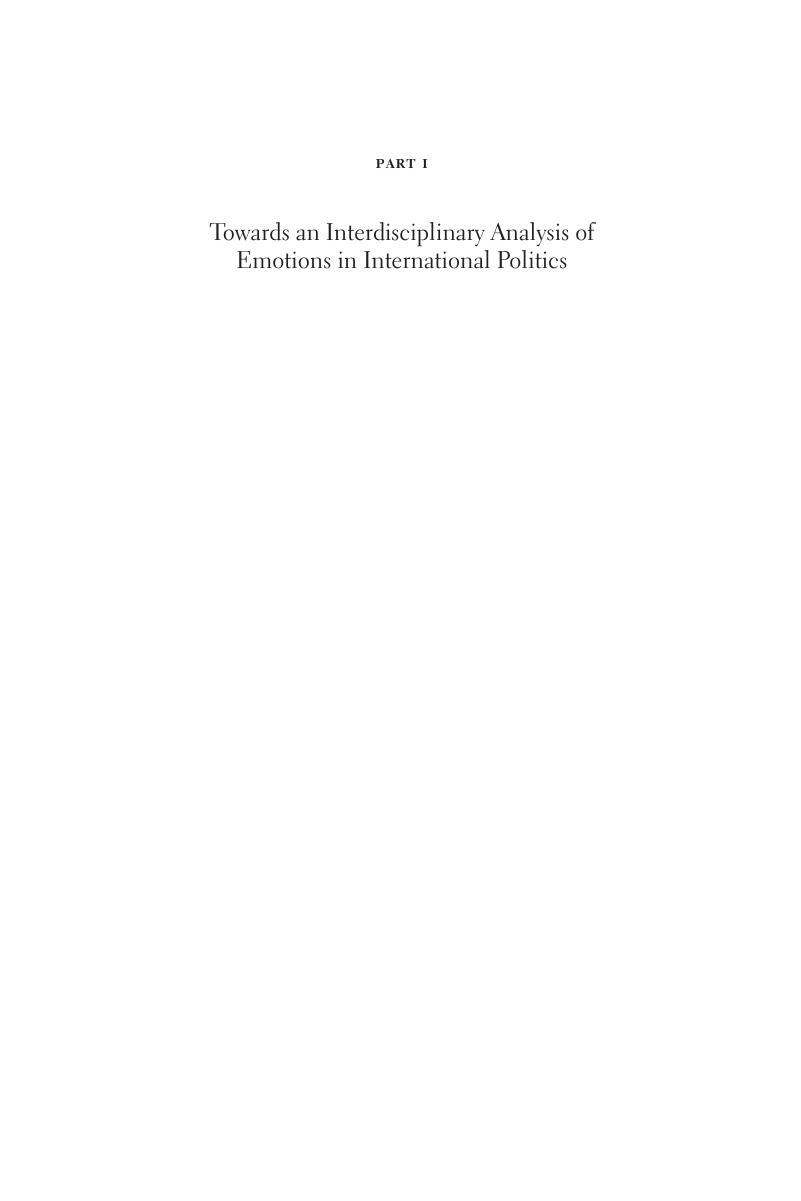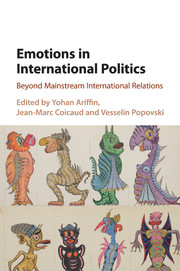Book contents
- Emotions in International Politics
- Emotions in International Politics
- Copyright page
- Contents
- Notes on Contributors
- Foreword
- Book part
- Introduction
- Part I Towards an Interdisciplinary Analysis of Emotions in International Politics
- Part II Emotions in Foreign Policy Decision Making and in War and Peace
- Conclusion
- Index
- References
Part I - Towards an Interdisciplinary Analysis of Emotions in International Politics
Published online by Cambridge University Press: 05 December 2015
- Emotions in International Politics
- Emotions in International Politics
- Copyright page
- Contents
- Notes on Contributors
- Foreword
- Book part
- Introduction
- Part I Towards an Interdisciplinary Analysis of Emotions in International Politics
- Part II Emotions in Foreign Policy Decision Making and in War and Peace
- Conclusion
- Index
- References
Summary

- Type
- Chapter
- Information
- Emotions in International PoliticsBeyond Mainstream International Relations, pp. 21 - 204Publisher: Cambridge University PressPrint publication year: 2016



